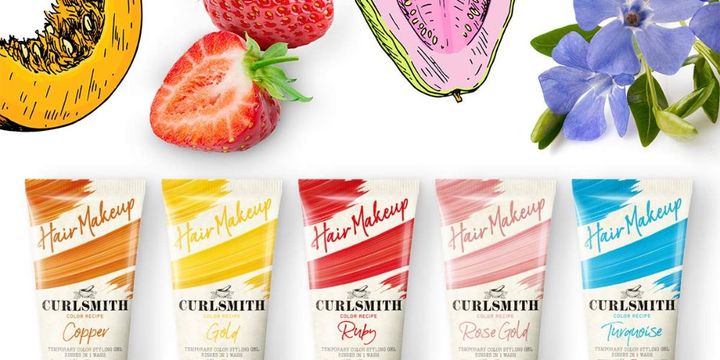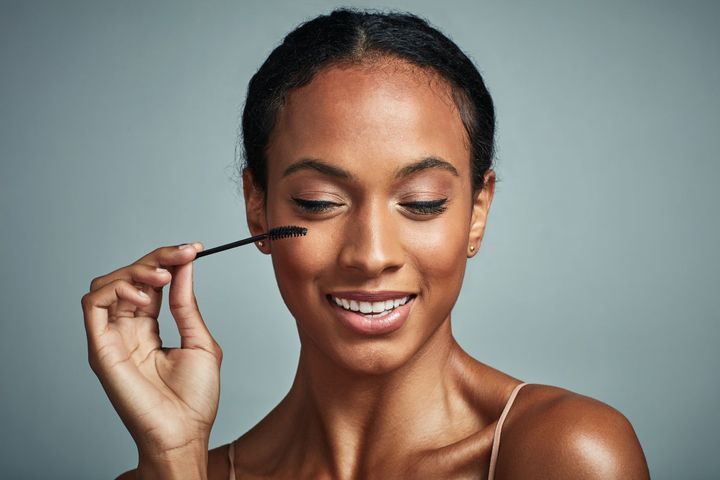5 Of The Best Facial Oils For Glowing Skin

Facial oils are having a moment—and for good reason.
Not only do they provide an incredibly easy way to give your skin some extra love, but they also offer a whole host of benefits that you just can’t get from other products.
Oils moisturize, soften and nourish our skin, improve our skin barrier and have a plethora of other skin benefits.
But, depending on their fatty acid profile, oils can be very different from one another.
Some are heavier, some are lighter, some will sink into your skin and other ones will linger on the surface.
Some will soften, some will brighten and others will soothe and repair.
But sometimes we happen to come across an oil that has such a well-balanced fatty acid profile and is abundant in wonderful plant compounds that it makes a complete skincare product on its own.
Let's have a look at 5 of these precious oils.
This article contains affiliate links. We may receive a commission (at no cost to you) if you make a purchase through a brand link below. Learn more here.
Quick links to 5 amazing facial oils:
- Clinganic Organic Rosehip Seed Oil
- US Organic Cranberry Seed Oil
- SVA Organic Baobab Oil
- Premium Nature Cold-Pressed Argan Oil
- Biossance Pure Squalane Oil
Rosehip Oil

Rosehip oil is probably the most well-known facial oil on this list. It is a very special, dry oil that is a favorite of many people.
It is pressed from the seeds and fruits of the Rosa species.
The oil is light, it has a nice golden-orange color and an indistinct earthy smell.
Rosehip oil is praised for its wonderful properties and the nice and soft feeling on the skin.
Let’s look at its main fatty acids. It has a large fraction of essential fatty acids - Linoleic (Omega-6) ~40% and Alpha-Linolenic (Omega-3) ~30%. It also contains Oleic acid (Omega-9) at ~16%.
It also has a rich unsaponifiable fraction that includes phytosterols, beta-carotene, and tocopherols (vitamin E).
Rosehip oil is well-known for its ability to soothe dry and chapped skin and repair damaged skin.
It is also used to brighten the skin, reduce hyper-pigmentation, reduce scars and stretch marks, as well as improve skin texture and appearance.
This oil is suitable for all skin types including dry skin, oily skin, combination skin, and sensitive skin.
While rosehip oil contains a large fraction of unsaturated fatty acids, it also contains vitamin E which gives it a shelf life of about 6 months after opening.
We recommend - Clinganic Organic Rosehip Seed Oil

Clinganic's Rosehip Oil is praised for its brightening, softening and moisturizing effects and is perfect for dull and tired skin.
You can use it on its own as a facial oil or carrier oil, or add it to your favorite oil blend.
You can also use it to help lock in moisture for shinier, healthier-looking hair.
And because it's super lightweight, you won't have to worry about any sticky residue.
Cranberry Seed Oil

Another very special oil is cranberry seed oil.
It contains a uniquely balanced fatty acid profile of almost equal amounts of Oleic acid (Omega-9) ~25%, Alpha-Linolenic acid (Omega-3) ~32% and Linoleic acid (omega 6) ~30%.
Cranberry seed oil is light, of a golden-yellow colour and has a pleasant fruity smell.
It is pressed from cranberry seeds and it is a by-product of the food industry which makes it also more sustainable than other oils.
It has a rich fraction of unsaponifiables comprising tannins, anthocyanins, flavonoids, and phenolic acid.
Cranberry oil is very moisturizing, nourishing, and soothing.
It has antioxidant and anti-inflammatory properties. It can brighten the complexion and improve skin tone, it has regenerative properties and can also be used on hair and scalp as it prevents itching and drying.
Cranberry oil is suitable for all skin types including mature skin, sensitive skin and damaged skin.
It is a very stable oil with a shelf life of up to 2 years.
We recommend - US Organic Cranberry Seed Oil, USDA Certified Organic

US Organic Cranberry Seed Oil is cold-pressed from cranberry seeds and is rich in omega-3 and omega-6 fatty acids, giving it excellent antioxidant activity and skin-nurturing benefits.
US Organic Cranberry Seed Oil can soothe, soften and brighten your skin.
It's also cruelty-free and Leaping Bunny Program certified, so you can be sure it hasn't been tested on animals.
Baobab Oil

Baobab oil is pressed from the seeds of the majestic baobab trees.
Just like the thick trunks of the tree are able to hold large amounts of water, baobab oil is proving to be very moisturizing and is particularly suitable for dry and mature skin.
The main fatty acids in baobab oil are Oleic (Omega-9) ~35%, Linoleic (Omega-6) ~29%, and Palmitic ~24%.
The rich unsaponifiable fraction contains phytosterols, tocopherols (vitamin E), calcium, tannins, and Alpha and Beta carotenes.
This is a very nourishing but still light oil. It softens skin and improves its elasticity.
It also has antioxidant and anti-inflammatory properties. It can also be used to moisturize dry hair and scalp.
Baobab oil is very stable with a shelf life of 2 to 5 years.
We recommend - SVA Organic Baobab Oil, Certified Organic

SVA Organics' Baobab Carrier Oil is 100% pure and therapeutic grade, making it perfect for all kinds of beauty applications.
It's perfect for use on the face, body, and hair, and can also be added to other creams, lotions, or conditioners.
Baobab oil has the ability to deeply nourish the skin, helping to reduce wrinkles and fine lines.
It can also be used around the eye area to help with dark circles and puffiness.
SVA Organics' Baobab Carrier Oil is USDA Organic certified and cruelty-free.
Argan oil

Argan oil has a long history as a beauty treatment in Morocco.
This oil is pressed from the kernels of the argan tree. The cold-pressed cosmetic oil has a light-yellow straw color and a distinct nutty smell.
The main fatty acids of argan oil are Oleic (Omega-9) ~45%, Linoleic (Omega-6) ~30%, and Palmitic ~15%. The unsaponifiable fraction contains xanthophylls, sterols, tocopherols, and carotenes.
Argan oil is well-known for its ability to moisturize skin and hair, reduce redness and irritation, and repair damaged skin.
It has antioxidant and anti-inflammatory properties. It also improves skin elasticity and it is recommended for all skin types including dry skin, mature skin, acne-prone skin, and sensitive skin.
It is a stable oil with a shelf life of up to 2 years.
We recommend - Premium Nature Cold-Pressed Argan Oil

Premium Nature's 100% pure argan oil is non-greasy and deep-penetrating oil can help with dry scalps, repair damaged hair, and even stimulate hair growth.
So whether you're looking to give your hair a little extra TLC or you're concerned about hair loss, nature's argan oil is here to help.
It also nourishes your skin and leaves it soft and protected. It is lightweight, fast absorbing, and gentle enough to be used on even the most sensitive skin.
Premium Nature's argan oil is cold-pressed and 100% pure.
Squalane Oil
Squalane oil is not a “true” oil like the other ones on this list. Rather, it is a hydrocarbon with a high affinity to our skin since it occurs naturally in our sebum.
It is extracted from plant sources like olives, amaranth, rice bran, and others. It can also be extracted from animal sources, so be aware of this when purchasing your squalane oil.
Squalane oil has a multitude of benefits for the skin. It moisturizes, fights free radicals, strengthens the skin barrier, and reduces trans-epidermal water loss. It also improves elasticity and protects skin from environmental damage.
Squalane is colorless, odorless, and very stable. It is suitable for every skin type including sensitive, oily, and acne-prone skin.
To read more about squalane oil, its benefits and uses, check out our article What Is Squalane Oil + 7 Ways To Use It In Your Beauty Routine.
We recommend - Biossance Pure Squalane Oil

Biossance Squalane Oil will moisturize, smooth, and soften your skin.
This powerhouse ingredient is perfect for all skin types, including sensitive and oily skin. It's quickly and easily absorbed, leaving your skin hydrated and soft.
Biossance Squalane Oil is derived from sugarcane, making it a sustainable and environmentally friendly choice.
So, there you go - five, single ingredient, well-rounded oils with wonderful skin properties.
Which one is your favorite?
Frequently Asked Questions About Facial Oils
When should I apply facial oil?
The best time to apply a face oil is after you’ve cleansed and toned your skin but before you moisturize.
Simply dispense 1-2 drops of oil into the palm of your hand and then massage it into your face and neck in upward motions.
It’s important not to go overboard with the amount of oil you use—a little goes a long way!

And if you find that your skin is still feeling dry after applying the oil, follow up with a light moisturizer.
But that is not all!
You can mix different oils together, and with a bit of trial and error you can come up with a blend that your skin will love.
You can add a couple of drops to your moisturizer, serum, or face mask.
You can use oils as nail and cuticle treatments or as a mask for chapped lips.
You can make a hair mask or apply a couple of drops to dry hair to keep frizz at bay.
Can facial oils be used on acne-prone skin?
The short answer is yes, facial oils can be used on acne-prone skin.
Moreover, a facial oil can actually help with regulating oil production, making the skin less oily and keeping acne at bay.
However, some oils are more suitable for acne-prone skin than others.
Light, non-comedogenic oils like rosehip oil, jojoba oil, or argan oil could work well on acne-prone skin. And a very light oil like squalane is recommended for anyone who is struggling with acne.
Therefore, it is possible to use facial oils on acne-prone skin, just choose your oils wisely.
What are the benefits of using a facial oil?
Facial oils are able to penetrate the skin deeply, delivering a host of nourishing benefits.
They can also moisturize the skin, reduce trans-epidermal water loss (TEWL), protect the skin's natural barrier, and help diminish the appearance of fine lines and wrinkles.
They can even be used to help control breakouts, as some oils contain natural antibacterial properties.
Whether you have dry or oily skin, there's a facial oil that's right for you.

How much face oil should I use?
A facial oil has a lot of benefits but it is important to use it sparingly.
Too much oil can leave your skin feeling oily and uncomfortable.
Using just a couple of drops every time you are applying oil should be more than enough. Rub it in gently, or press it into the skin.
Remember, a little facial oil goes a long way!
Why should I use facial oil?
Many people are hesitant to use facial oils, thinking that they will cause breakouts or make their skin oily.
However, using the right oil in the right way can actually be beneficial for all skin types.
Oils help to lock in moisture, keeping the skin hydrated and preventing dryness.
They can also help to balance the skin's natural oil production, which can help to control breakouts.
In addition, facial oils can help protect the skin from environmental damage and reduce the appearance of fine lines and wrinkles.
When used regularly, facial oils can help improve the overall health and appearance of the skin.


